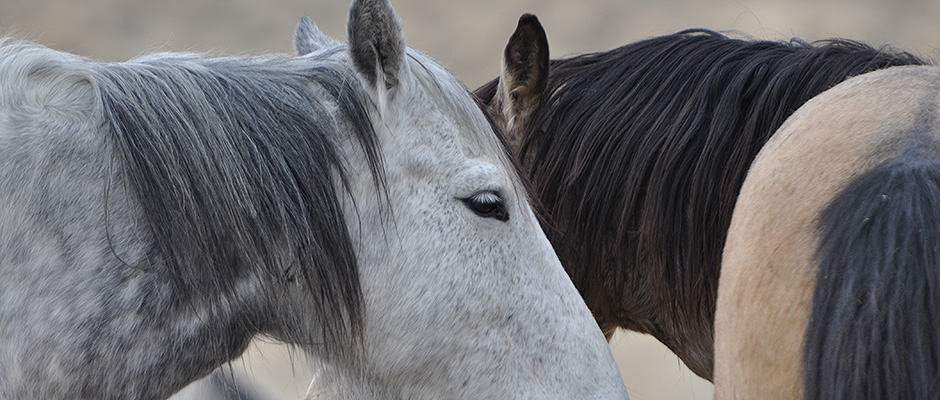Share this article
TWS’ Norris Elected Chair of Horse & Burro Coalition
The National Horse & Burro Rangeland Management Coalition elected Keith Norris as their new Chair during their January meeting. Norris is the Assistant Director of Government Affairs for The Wildlife Society.
The Coalition is composed of over a dozen national organizations “working together to identify proactive and comprehensive solutions to increase effective management of horse and burro populations and mitigate the adverse impacts to healthy native fish, wildlife, and plants and the ecosystems on which they depend.”
The Bureau of Land Management (BLM), the federal agency charged with the majority of wild horse and burro management, estimates over 49,000 of the animals roam on BLM rangelands in 10 western states. An additional nearly 48,000 individuals are contained in short- and long-term holding facilities. The BLM states these rangelands can appropriately handle less than 27,000 horses and burros.
“The overpopulation of feral horses and burros is a problem without any easy solution,” says Norris. “Federal agencies have been tasked with managing these animals at levels that prevent damage to the rangelands, and then have seen their hands tied by political pressure. The result is a continuously growing population of a non-native species that is damaging the rangelands.”
Feral horses and burros, legally defined by the Wild Horse and Burro Protection Act of 1971 as “wild,” can cause vast degradation of sensitive ecosystems. Unlike native ungulate species, grazing by feral horses cuts vegetation very close to the soil and stunts re-growth. Feral horses also impact native species, like elk and big horn sheep, by displaying aggressive tendencies around water sources and disturb small mammal and reptile communities by limiting the availability of burrows and vegetative cover. The ecological impacts of feral horses are far-reaching and can contribute to the decline of native species and the invasion of non-native plants.
However, horses are often seen as an iconic species of the western frontier. They are generally regarded as beautiful animals. Many groups actively work to prevent the BLM from reducing horse and burro populations through roundups or euthanasia.
It’s a difficult issue, and Norris will be tasked with leading and coordinating the Coalition’s efforts. His first job will be setting the coalition’s priorities for the year and reaching out to leaders in the BLM and other land management agencies to engage them in the Coalition’s discussions.
“I’m excited for the challenging opportunity to lead this important coalition. We have a lot of work to do – but it is important work that will ultimately improve the situation for wildlife, livestock, rangelands and the wild horses themselves.”
The Wildlife Society has a Final Position Statement on Feral Horses and Burros in North America and a Fact Sheet on Feral Horses and Burros: Impacts of an Invasive Species and actively encourages the reduction of feral horse and burro populations in an effort to protect rangeland habitats for native wildlife species.
Header Image: Image Credit: Utah Bureau of Land Management








